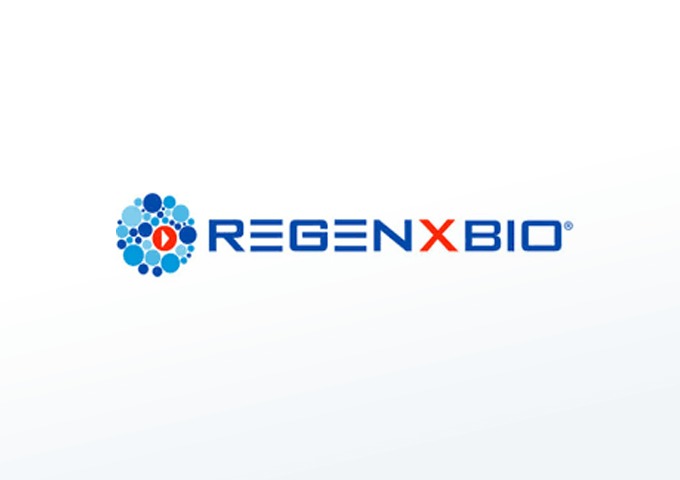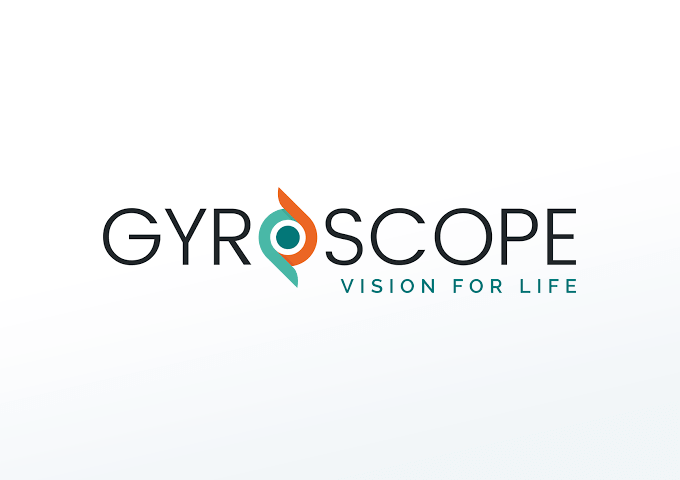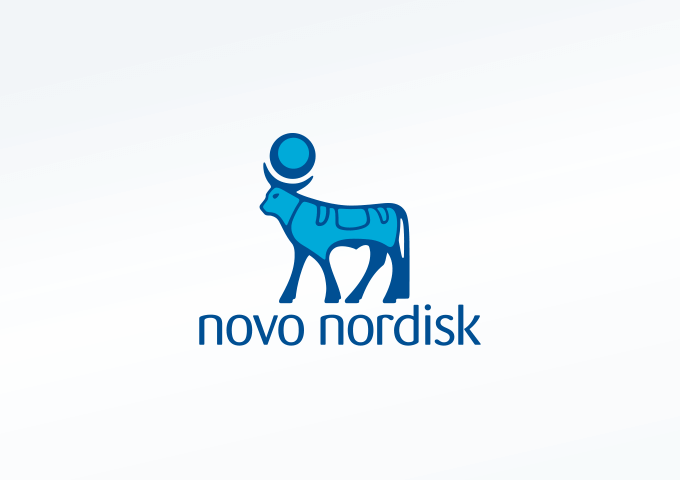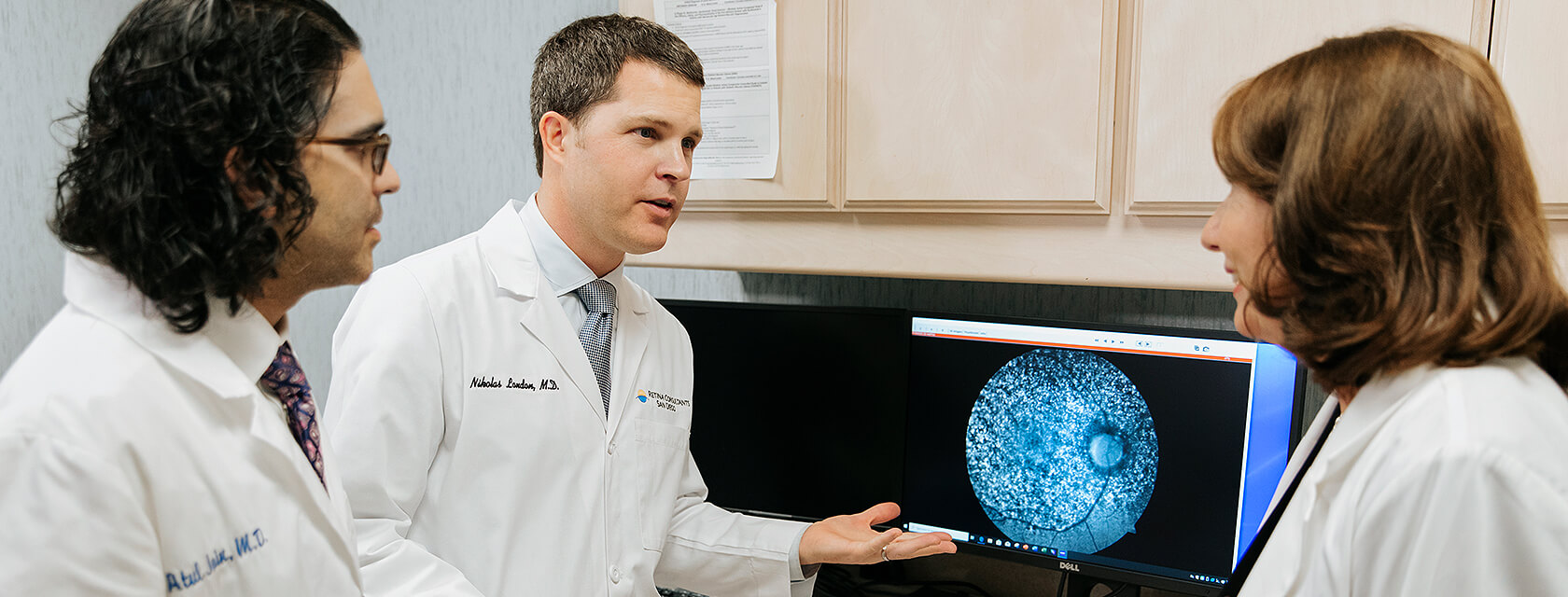Ongoing Clinical Trials
Wet Macular Degeneration
Wet AMD is defined by the development of an irregular blood vessel membrane beneath the macula that, without treatment, will permanently destroy the delicate tissue. Prior to about 2005, we did not have very effective treatment options, and severe loss of vision was common for affected patients. As a result of clinical trials in the early 2000s, we now have extremely effective, minimally-invasive, and nearly painless treatments. On the other hand, the treatments need to be repeated frequently to maintain vision, on average every 10 weeks, which is a burdeon for patients and caregivers. We are actively working on the next generation of treatment options, including much longer-lasting and even more effective molecules, as well as gene therapy which has the potential to essentially cure some patients. These are exciting times, and clinical trials can be wonderful options for eligible patients. Below are some of the clinical trials we are participating in, and are available to our patients. If you feel that you, a friend, or a family member might be a candidate for one of these trials, feel free to contact our research team at [email protected].


BIOREACTOR
REGENXBIO (Rockville, MD)
Sister study to ATMOSPHERE evaluating different drug formulations
PI: Nikolas JS London, MD FACS
Status: Active and enrolling
NIH registration: Clinicaltrials.gov
Sponsor website: REGENXBIO
Contact: [email protected]


HONU
Genentech (South San Francisco, CA)
A Phase 2b, Randomized, Double-masked, Multicenter, Dose-ranging, Sham-controlled Clinical Trial to Evaluate Intravitreal JNJ-81201887 (AAVCAGsCD59) Compared to Sham Procedure for the Treatment of Geographic Atrophy (GA) Secondary to Age-related Macular Degeneration (AMD)
PI: Nikolas JS London, MD FACS
Status: Active and enrolling
NIH registration: Clinicaltrials.gov
Sponsor website: Genentech
Contact: [email protected]
Advanced Dry AMD (Geographic Atrophy)
Dry AMD is very common in patients over 60, and is defined by small deposits of a cholesterol-like material under the macula. While these deposits are relatively harmless, a small percentage of patients with dry AMD will progress to an advanced form of the disease where the tissue directly beneath the retina (retinal pigment epithelium) starts to die, termed geographic atrophy (GA). Affected areas of the retina are dense blind spots for the patient, and slowly enlarge over time. Affected patients can develop significant difficulty with common tasks like reading, driving, and even recognizing faces of loved ones and friends. Unfortunately, we currently have no treatment options for GA, and are relegated to simply watch patients lose vision over the course of several years. However, this is a massive area of reasearch. We are learning a lot about the disease process, and many molecules are being evaluated to slow down the loss of vision in affected patients. This includes painless eye injections, systemic subcutaneous (skin) injections, and even gene therapy. We are committed to finding an effective treatment option, and will not stop until we can prevent blindness in our patients.


HORIZON and EXPLORE
Gyroscope Therapeutics (London, UK)
Phase II study evaluating subretinal gene therapy for geographic atrophy associated with AMD
PI: Nikolas JS London, MD FACS
Status: Active and enrolling
NIH registration: Clinicaltrials.gov
Sponsor website: Gyroscope
Contact: [email protected]
Parasol
Janssen Pharmaceuticals (Beerse, Belgium)
A Phase 2/3, randomized, double-masked, multi-center, dose-ranging, sham-controlled clinical trial to evaluate Intravitreal JNJ-81201887 (AAVCAGsCD59) compared to sham procedure for the treatment of Geographic Atrophy (GA) Secondary to Age-related Macular Degeneration (AMD).
PI: Nikolas JS London, MD FACS
Status: Ongoing
NIH registration: Clinicaltrials.gov
Sponsor website: Janssen
Contact: [email protected]
Diabetic Retinopathy and Diabetic Macular Edema
Diabetic retinopathy (DR) is a leading cause of vision loss, particularly affecting a working-age population. This amounts to approximately eight million people in the United States alone. DR is a complication of prolonged diabetes manifests as damage to the delicate blood vessels and neural tissue of the retina. Even early disease can affect numerous measures of visual function, including contrast sensitivity, night vision, peripheral vision, and visual acuity. In severe disease, patients develop small hemorrhages throughout the retina, swelling in the central retina, permanent loss of blood vessels, and even dangerous new blood vessel growth which may result in the eye filling with blood, retinal detachment, and severe glaucoma. Fortunately, in the majority of patients these complications can be prevented or reversed with intervention. Treatments often overlap with those for wet macular degeneration, and exciting options are currently being evaluated. This includes long-lasting molecules and even gene therapy. See below for some of the studies that are currently active at RCSD, and feel free to contact us to see if any would be a good fit for you.


FOCUS
Novo Nordisk (Bagsværd, Denmark)
Phase II trial evaluating semaglutamide for diabetic retinopathy
PI: Anne M Hanneken, MD
Status: Active and enrolling
NIH registration: Clinicaltrials.gov
Sponsor website: Novo Nordisk
Contact: [email protected]
Retinal Vein Occlusion
Retinal vein occlusion (RVO) is a common vascular disorder of the retina and one of the most common causes of vision loss worldwide. Specifically, it is the second most common cause of blindness from retinal vascular disease after diabetic retinopathy. RVO is classified according to where the occlusion is located. Occlusion of the central retinal vein at the level of the optic nerve is referred to as central retinal vein occlusion (CRVO). Obstruction at any more distal branch of the retinal vein is referred to as branch retinal vein occlusion (BRVO).
Elmiron Maculopathy
Elmiron, otherwise knows as pentosan polysulfate sodium, is a commonly-prescribed medication for the treatment of interstitial cystitis. In fact, it is one of the only treatment options for this conditions. Within the past few years, retina specialists have discovered a toxic effect of this medication on the macula. Using unique diagnostic modalities including dark adaptation, macular microperimetry, fundus autofluorescence, optical coherence tomography, and color photography, we at RCSD are analyzing the effect of this maculopathy on visual function as well as following patients to learn how the damage changes over time. Interested patients should contact our appointment desk for a routine appointment, and any of our physicians can arrange for an appropriate workup.

Retina Consultants San Diego (Poway and La Jolla, CA, USA)
Multimodal imaging for Elmiron maculopathy
PI: Nikolas London, MD FACS and Anne Hanneken, MD
Peer-reviewed Publications
Our doctors have been published in top scientific journals.

